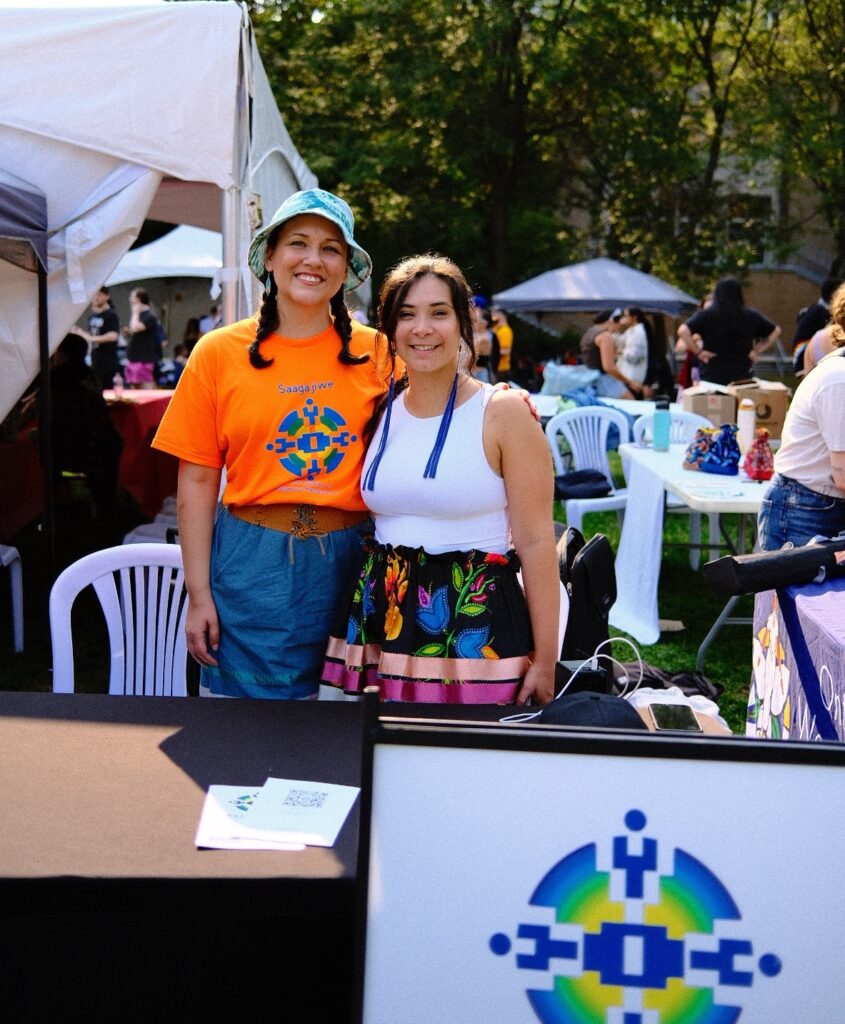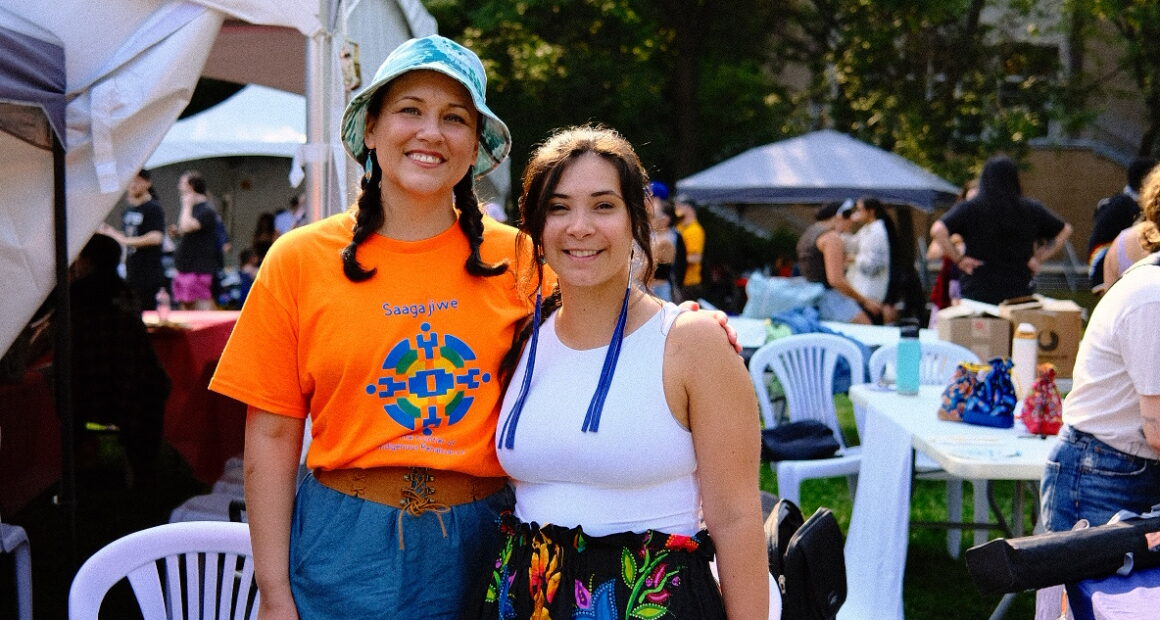Years after calls for truth and reconciliation for journalists, positive coverage of Indigenous people remains sparse

A CBC News article recently caught the attention of Gabrielle McMann, an Ojibwe journalist, advisor and lecturer on Indigenous reporting, and a member of the Mississaugas of the Credit First Nation—but not for the right reason. The article, covering the latest in a series of Missing and Murdered Indigenous Women in Manitoba, used words McMann couldn’t believe she was reading. With detached language and an undertone of prejudice against the victims, the article was unsympathetic and cold.
One example: “The two aboriginal women were friends and both were involved in the sex trade and lived at-risk lifestyles. They were also involved some years earlier with a group of men who used them for sex in exchange for food, clothes and crack cocaine.”
First written in 2009 and updated in 2015, McMann realized she had a good example of what not to do for a talk about reporting on Indigenous issues in a class of journalism students at Toronto Metropolitan University. She remembered thinking, How could anyone publish this in good conscience? “Even though it was a while ago, I’ll never forget that article,” says McMann.
In 2019, CBC reported that 2.1 per cent of its permanent staff were Indigenous, compared to the 4.9 per cent of Canada’s total population. A University of Toronto study in collaboration with the World Association for Christian Communication (WACC) revealed that when covering the conflict between the Wet’suwet’en First Nation and the Coastal Gaslink Pipeline in British Columbia, mainstream Canadian coverage was unbalanced—meaning “many of their articles only covered one side of the story in depth and the other side with little information.”
These outlets included household names such as the National Post, the Calgary Herald, the Edmonton Sun, the Vancouver Sun, The Province, and Windspeaker—who, according to the study, ranged from publishing slightly unbalanced articles to taking outright anti-Indigenous stances.
Lack of Care & Responsibility
Stories involving Indigenous joy, success, happiness, growth, and prosperity can be hard to come by. Recently, news about individuals pretending to be Indigenous for personal gain—known as Pretendians—has gained heavy coverage. While this reporting is important for holding individuals and institutions accountable, McMann says the issue risks being overreported. “Just as much, if not more, of an effort should be put towards reporting on people engaged with us and doing these amazing things to uplift the community,” she says.
Duncan McCue, a journalism professor at Carleton University and former CBC journalist, is the author of the journalism textbook, Decolonizing Journalism. According to McCue, who is Anishinaabe and a member of the Chippewas of the Georgina Island First Nation, the only way for an Indigenous person to be mentioned in the news is through “4Ds”: when they are “Drumming, Dancing, Drunk, or Dead.” However, McCue says that over the past couple of years, there has been a shift in reporting on Indigenous issues with a greater emphasis on reporting with care and responsibility.
Bad News Authentically
McMann says Indigenous people are still being misrepresented in mainstream media, mostly portrayed as “land defenders” and “powwow dancers,” rather than giving a fair and holistic perspective of who they are, both as individuals and as communities. She attributes the overrepresentation of Indigenous tragedy and the colonial infrastructure in mainstream news as misrepresentation. The “majority of our newsrooms are built on the white man perspective,” says McMann. “They are built by the white man to entertain the white man.” While there are more than just white men in Canadian newsrooms today, important editorial decisions continue to be influenced by this perspective. McMann says the lack of Indigenous representation in journalism makes for an environment where Indigenous voices are difficult to hear.
The founder and former reporter of The Discourse Nanaimo, Julie Chadwick, says relationship building and trust are key to covering stories in Indigenous communities. “The real stories come from those great connections and that trust,” she says. “Authenticity emerges when you have the trust of the people you are writing about.”
McCue points to Call to Action 86 in the Truth and Reconciliation Commission report. It is a call to journalism schools across the country to educate their students on “the history of Aboriginal peoples, including the history and legacy of residential schools, the United Nations Declaration on the Rights of Indigenous Peoples, Treaties and Aboriginal rights, Indigenous law, and Aboriginal-Crown relations.” McCue says this is key. “We know that there are young Indigenous people out there who want to tell their stories and who know the narratives about Indigenous people in the media have been narrow and need to be broadened, but they need to be given the tools.”
Reporting Indigenous Joy
In “Next Generation of Climate Warriors,” the January 10 episode of CBC radio’s Unreserved, McCue highlighted a story of Indigenous joy. “They were talking about the role that youth are playing and the climate change movement,” he says. “That, to me, is a story that deserves to be told.”
Indigenous stories of joy are out there, it’s only a matter of keeping an eye out for them. “Just like any other community, or any other individual,” says McMann. “There is a lot that can be written about us—our history, culture, and stories.”
Correction: An earlier version of this article included the following sentence: “McMann says Indigenous people are still being misrepresented in mainstream media, often portrayed as ‘land defenders’ and ‘powwow dancers.'” This does not reflect the purpose of the statement as Indigenous Peoples are proud of these aspects of their culture but are also proud of so much more. The sentence has since been changed to: “McMann says Indigenous people are still being misrepresented in mainstream media, mostly portrayed as ‘land defenders’ and ‘powwow dancers,’ rather than giving a fair and holistic perspective of who they are, both as individuals and as communities.”
About the author
Emily is in her final year of her Bachelor of Journalism at TMU, fulfilling a minor in Politics and Governance. She has written for the student magazine CanCulture and finds interest in stories about local and international politics, as well as social and environmental issues. Outside of her reporting, she spends most of her time playing soccer, reading just about anything she can find and spending time with her family.



